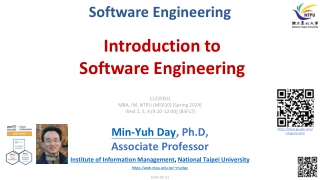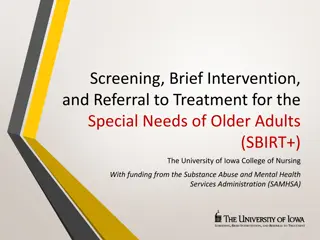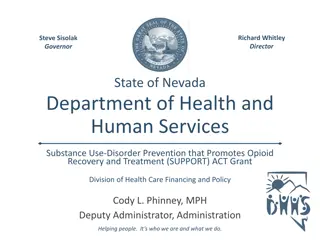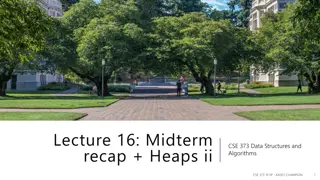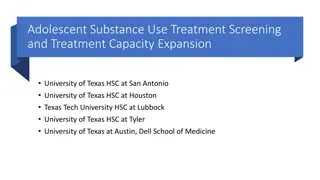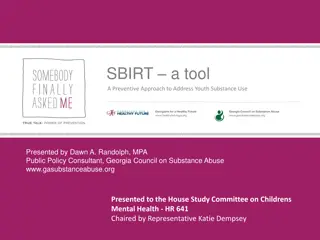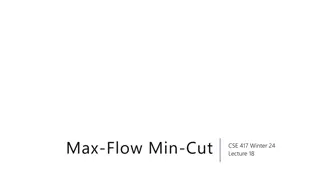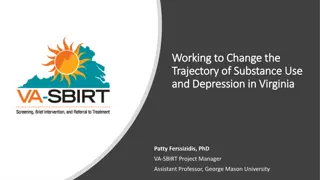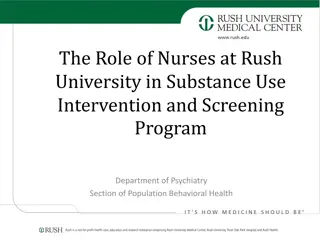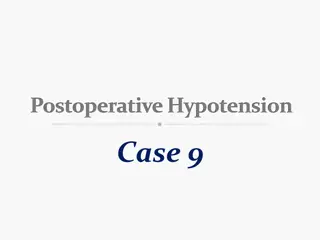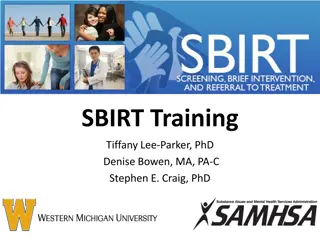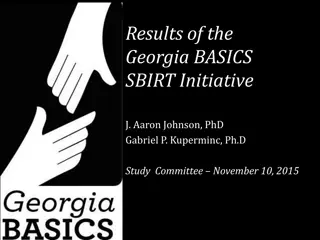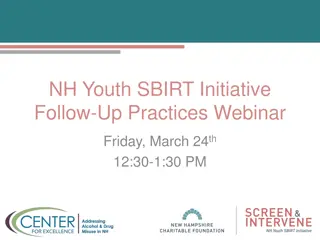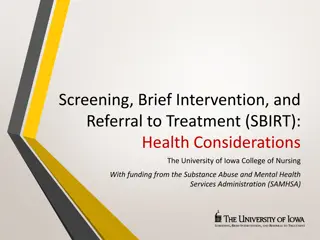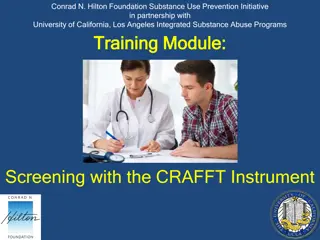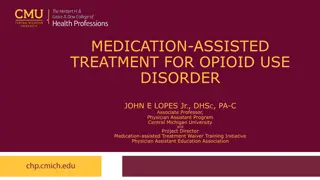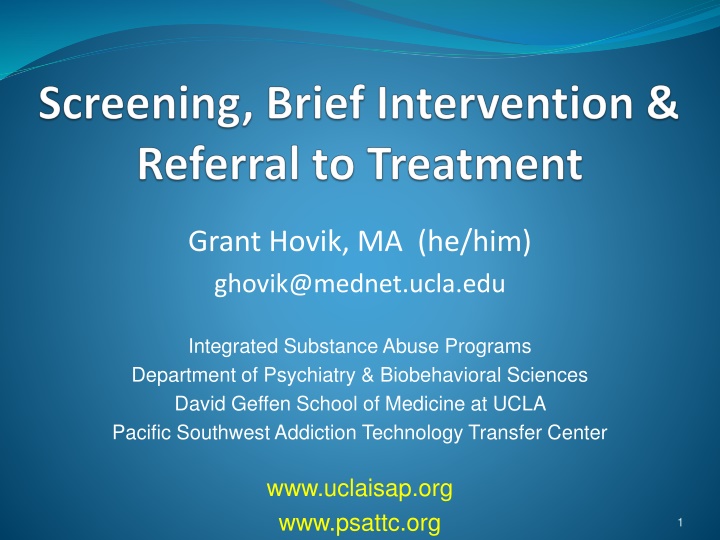
SBIRT and Brief Interventions in Substance Abuse Treatment
SBIRT (Screening, Brief Intervention, and Referral to Treatment) is an effective public health approach for early intervention in substance use disorders. Brief interventions have shown significant positive outcomes in improving patient health and reducing risky substance use behaviors. Learn about the impact of SBIRT and how clinicians can best engage with patients to promote positive change.
Download Presentation

Please find below an Image/Link to download the presentation.
The content on the website is provided AS IS for your information and personal use only. It may not be sold, licensed, or shared on other websites without obtaining consent from the author. If you encounter any issues during the download, it is possible that the publisher has removed the file from their server.
You are allowed to download the files provided on this website for personal or commercial use, subject to the condition that they are used lawfully. All files are the property of their respective owners.
The content on the website is provided AS IS for your information and personal use only. It may not be sold, licensed, or shared on other websites without obtaining consent from the author.
E N D
Presentation Transcript
Grant Hovik, MA (he/him) ghovik@mednet.ucla.edu Integrated Substance Abuse Programs Department of Psychiatry & Biobehavioral Sciences David Geffen School of Medicine at UCLA Pacific Southwest Addiction Technology Transfer Center www.uclaisap.org www.psattc.org 1
What is SBIRT? SBIRT is a comprehensive, integrated, public health approach to the delivery of early intervention and treatment services For individuals with substance use disorders Individuals at risk of developing these disorders Primary care, trauma centers, mental health treatment, other community health settings provide opportunities for early intervention with at-risk substance use Before more severe consequences occur 2
Brief interventions trigger change A little counseling can lead to significant change, e.g., 5 min. has same impact as 20 min Research is less extensive for illicit drugs, but promising Cocaine/heroin users seen in primary care: 50% higher odds of abstinence at follow-up after receiving BI than those who didn t get BI 3
Study Reference Results - conclusions Trauma patients 48% fewer re-injury (18 months) 50% less likely to re-hospitalize Gentilello et al, 1999 Hospital ER screening Reduced DUI arrests 1 DUI arrest prevented for 9 screens Schermer et al, 2006 Physician offices 20% fewer motor vehicle crashes over 48 month follow-up Fleming et al, 2002 Meta-analysis Meta-analysis Interventions reduced mortality Treatment reduced alcohol, drug use Positive social outcomes: substance-related work or academic impairment, physical symptoms (e.g., memory loss, injuries) or legal problems (e.g., driving under the influence) Interventions can provide effective public health approach to reducing risky use. Cuijpers et al, 2004 Burke et al, 2003 Meta-analysis Whitlock et al, 2004
Awareness of problem Behavior change Motivation Presenting problem Screening results 6
Brief interventions are most successful when clinicians relate patients risky substance use to improvement in their overall health and well-being 7
L Listen & Understand O Options Explored F Feedback W Warn Avoid Warnings! (that s it) 9
Setting the stage Feedback Tell screening results Explore pros & cons Explain importance Listen & understand Assess readiness to change Discuss change options Options explored Follow up 10
For additional information on SBIRT or other training topics, visit: www.attcnetwork.org www.worldofsbirt.wordpress.com http://www.attcelearn.org/ ( Foundations of SBIRT ) 11


